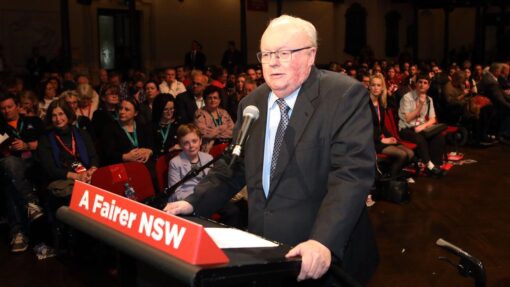Ex-ANZ execs lose bonus millions after record fine
Derek Rose |

The former head of ANZ and most of his leadership team have missed out on $32 million in bonuses after the major bank copped a record fine from the corporate watchdog.
Ex-bank chief Shayne Elliot lost a $13.5 million bonus for 2024 and 2025 while three other executives were also stripped of their short-term incentive payments, the company’s annual report disclosed on Monday.
The action came after ANZ was in September slapped with a $240 million penalty following an Australian Securities and Investments Commission probe into widespread misconduct, including mismanaging a $14 billion bond it was handling for the federal government.
“The board takes its role in setting the remuneration for the executive team very seriously,” ANZ chairman Paul O’Sullivan said in the annual report.

“This includes not only rewarding management but also holding them to account when things go wrong.”
The other former executives to miss their bonuses, Maile Carnegie, Gerard Florian and Antony Strong, have left the bank in 2025.
At his suggestion, chief executive Nuno Matos was also not awarded a short-term bonus for the year, even though the issues pre-dated his arrival in May.
Mr O’Sullivan said this reflected Mr Matos’s commitment to leading by example and embedding a culture of accountability.
The fine was part of $1.1 billion in “significant items” that have taken a toll on ANZ’s bottom line, with another big-ticket cost being $414 million linked to 3500 redundancies.
ANZ reported its statutory profit for the year to September 30 was down 10 per cent on the prior year to $5.89 billion, while its cash profit fell 14 per cent to $5.8 billion.

“While our financial performance held steady when excluding these items, our performance as a business reinforces the importance of our ANZ 2030 strategy,” Mr Matos said, referring to his plan to reset the bank.
ANZ’s institutional and New Zealand divisions had performed consistently well, but its Australian retail and business banking divisions had underperformed, he said.
“Despite growth in both assets and deposits, intense competition and a falling interest rate environment impacted margins,” Mr Matos said.
The percentage of Australians who considered ANZ their main financial institution ticked lower even as retail savings and transactional account deposits grew 12 per cent to $100 billion.
Mr Matos said work was under way to improve the outlook, including accelerating the integration of Suncorp Bank, which ANZ acquired in mid-2024.
More than 30 per cent of the 3500 staff targeted for lay-offs had left the bank by the end of October, the company said.

ANZ announced a final dividend of 83 cents per share, taking its total dividends for 2024/25 to $1.66, the same as for the previous year.
ANZ shares were up 2.7 per cent to $37.79 on Monday afternoon.
ANZ also released its annual climate report on Monday detailing its commitments to the transition to net-zero emissions.
Activist group Market Forces said the 93-page document showed ANZ had reduced its exposure to oil and gas producers by $3.4 billion in the past few years – dropping from $7 billion in 2022 to $3.6 billion in 2025.
But Kyle Robertson, the group’s head of research, said ANZ was still the worst of the big four banks when it came to combating climate change.
“ANZ claims it’s committed to the critical transition to a clean energy economy but is Australia’s biggest funder of coal, oil and gas expansion,” he said.
AAP


